#historical textiles
Text
Some tablet weaving I've done recently!

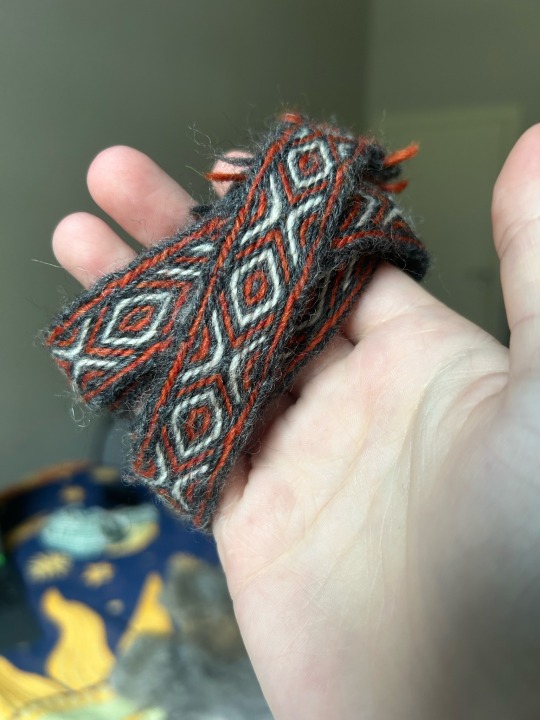

102 notes
·
View notes
Text
Finished my first tablet woven band. It’s longer than I expected for an inklette loom (the small version of an Inkle loom). Now i need to find a use for it tho 😅


Already thinking about a more historical project. Hallstatt maybe?
@cyreneduvent
#archaeology#history#field archaeologist#tablet weaving#card weaving#historical textiles#tablet woven band#historical fashion#Viking#celtic#Germanic#frankish#merovingian#hallstatt#iron age
60 notes
·
View notes
Photo

textile with flower motive, 14th century, italo-arabic. made of silk, linen, and golden thread.
#collected#.chatter#textiles#1300s#medieval art#medieval textiles#historical textiles#archaeology#historic conservation
70 notes
·
View notes
Text
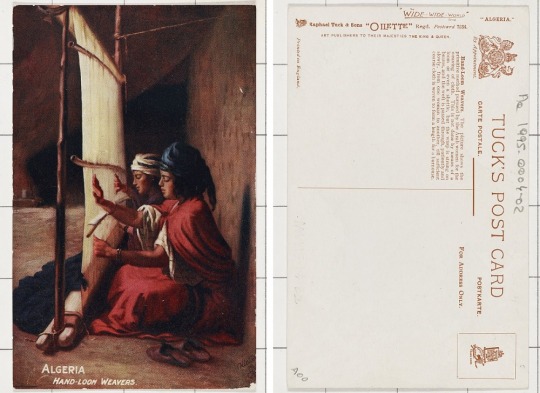
Young weavers on a postcard from Algeria (1905)
Raphael Tuck & Sons.''OILETTE'' Regd. Postcard 7534. Art publishers to Their Majesties The King and Queen. Printed in England
Orelove, E. (2018) "African Postcard Collection, EEPA 1985-014". Museo Nacional de Arte Africano. Washington.
3 notes
·
View notes
Text

Los Angeles/OC -
I’ll be teaching a hand spinning class using drop spindles (they work as top or bottom whorl) at the Knitting Tree!
Sign ups are open - https://theknittingtreela.com/products/intro-to-spinning
0 notes
Text
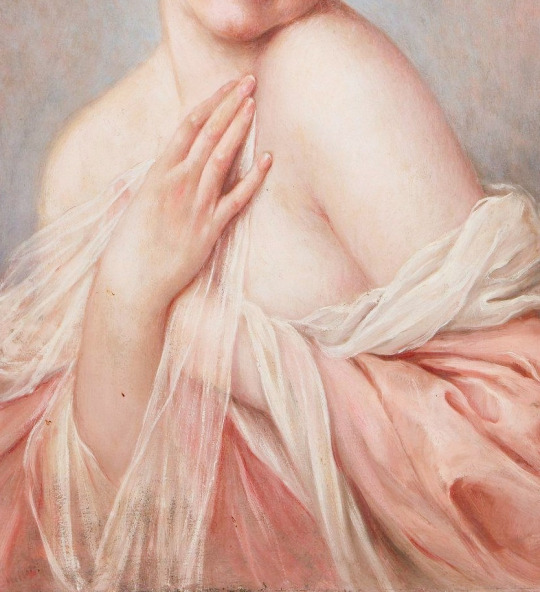

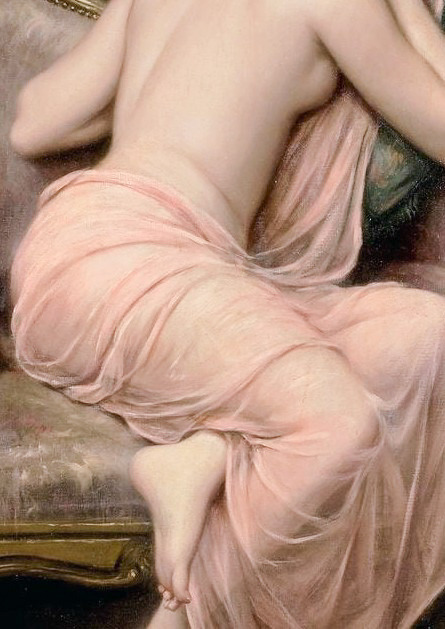
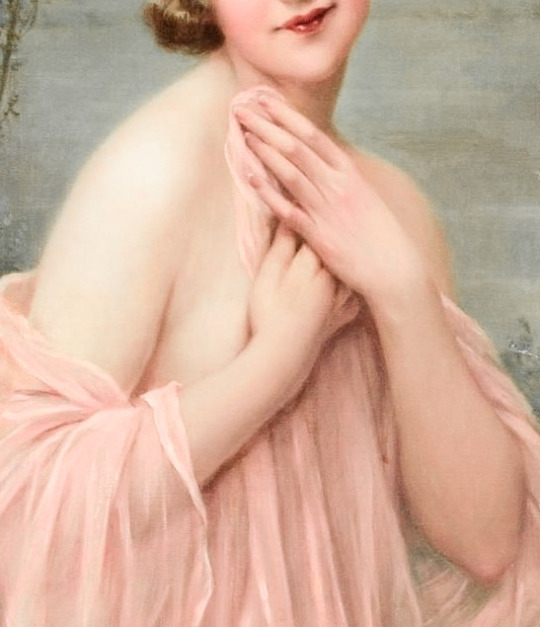
François Martin-Kavel & pink fabrics
French, 1861-1931
#art#painting#classical art#women in art#art detail#fine arts#art history#french art#François Martin-Kavel#pink aesthetic#pink#19th century art#19th century#fashion history#historical fashion#textiles#art lover#historical art#painting detail#light academia
7K notes
·
View notes
Text
Songket
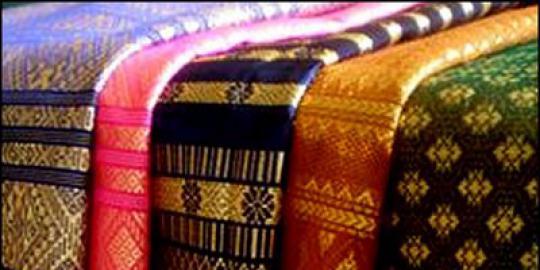
Songket is a fabric that belongs in the brocade family of Indonesia, Malaysia, Brunei and Singapore.
It is a handwoven silk or cotton, intricately patterned with gold and silver threads to create a shimmering effect.
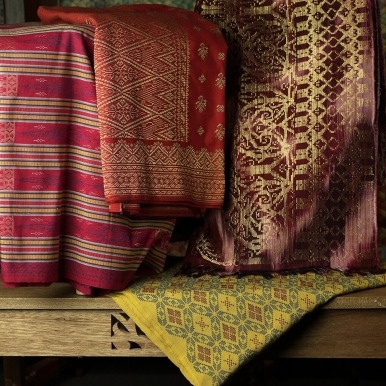

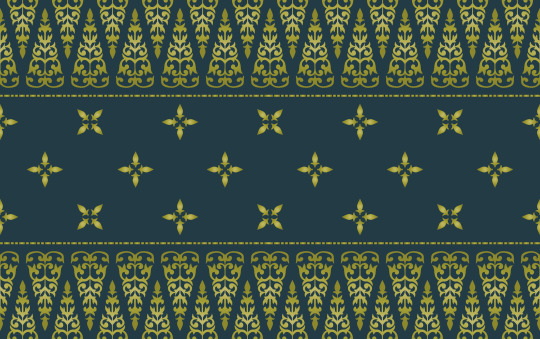
1 note
·
View note
Text
Wearing the Cloak: Dressing the Soldier in Roman Times :: Edited by Marie-Louise Nosch

View On WordPress
#978-1-8421-7437-1#ancient roman fabrics#ancient textiles#ancient textiles series#army clothing#army costume#army fabrics#army textiles#army uniforms#books edited by marie-louise nosch#first edition books#historical textiles#history costume#history textiles#italian fabrics#italy history#military history#roman fabrics#roman textiles#uniforms materials
0 notes
Text

1895
#historical fashion#fashion#historical#history#historical clothing#historical dress#long dress#victorian#victorian era#victorian fashion#victorian pattern#victorian clothing#victorian history#victorian dress#textile#textiles#art#artwork#fashion plate#fashion dress#1800s dress#late 1800s#1800s fashion#1800s#circa 1895#19th century fashion#late 19th century#19th century#1895 sleeves#dress
2K notes
·
View notes
Text
Valentine's Day for embroidery nerds
Something I love about historical embroidery is how much the present and the past are stitched together. Valentine's Day is one of those things that's centuries old, but still a little new and fresh every time it rolls around. It is what we put into it, as well as what it used to be.
I print patterns onto interfacing that sticks to the fabric while you stitch. Then when you're done, you just dunk it in water to wash the pattern off!
So here are my new festive offerings:

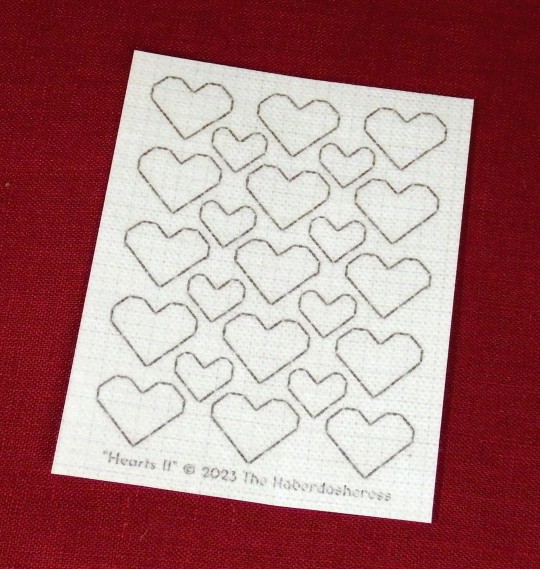
Visible mending patches: Hearts I and Hearts II
I couldn't decide on one, so why not both? These are great if you want an easy way to embroider little wee hearts on things! They really shine when they're used for visible mending. You can use them to attach new patches to holes in old clothes, and look good doing it.

Embroidery Border: Lovebirds High
I wanted something big and fun, so I designed this one myself. Its figurative grandparents are Renaissance blackwork and Scandinavian Rosemaling. I liked being able to combine an existing embroidery border into a bigger pattern. 7.5 cm (3") wide and 16" (40cm) long.
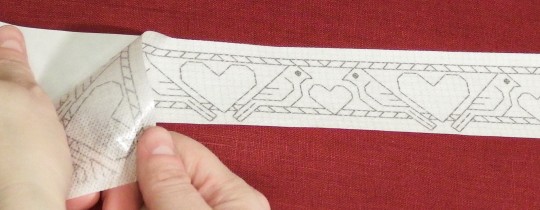
Embroidery Border: Lovebirds Low
Another original design! I've been making a lot of birds lately. To me these feel like office-worker sparrows that have stopped to kvetch together on a window ledge during their seed break. Love... is on the staff meeting agenda. 1 ¼" (3.5 cm) wide and 40 cm (16") long
And finally...

The apple of my eye, the jewel of my crown, Renaissance Hearts
God bless Bartolomeo Veneto (active 1502-1531), who was incredibly good at painting clothing. Because this one, I could make literally the same pattern. I could just go...
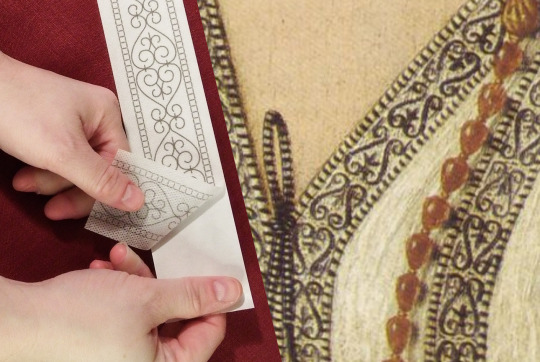
The pattern is 3.5 cm (1 ¼") wide and 16" (40 cm) long.
My Etsy Store has even more designs, as well as some fashion accessories. Shipping is free on orders $40 CAD and above.
And as always, I remain deeply grateful for your attention, energy, enthusiasm, and patronage. I am so lucky to have this business; it's changed my life. Thank you!
497 notes
·
View notes
Text

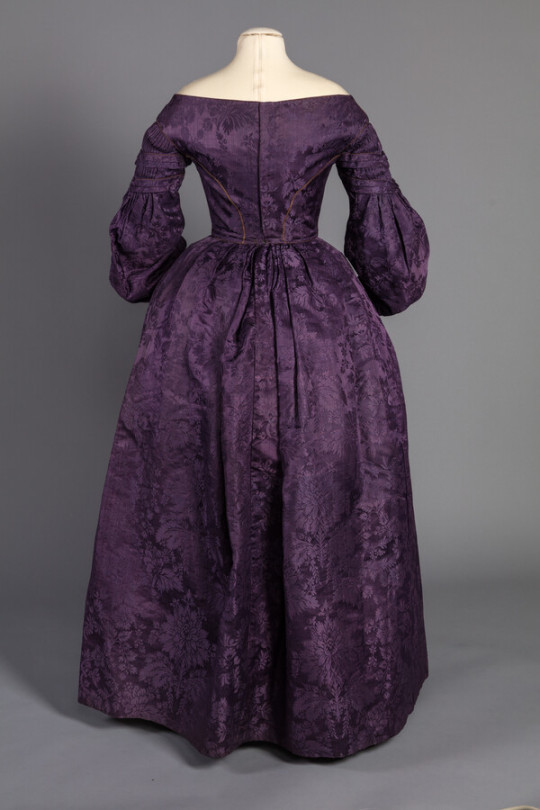
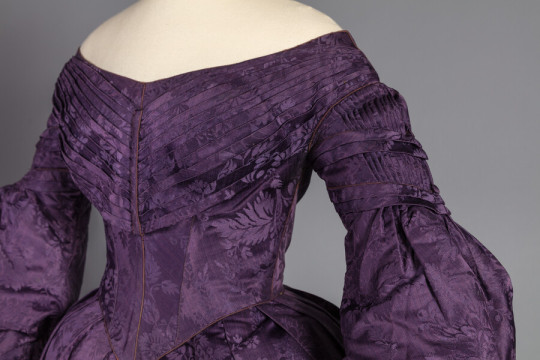
Oh, saints. This dress combines so many things I love in one place!
First of all, we’re in the late 1830s (by my guess), a time of dress transition. You can see the influence of the Romantic with those sleeves, but the hint of later Victorian gowns in the bodice shaping. The particular bodice here is fan-pleated, which is pretty self-explanatory if you look at the way the fabric is both pleated and fanned out. I do adore the result.
But, ahem, that damask? That color? Purple, always. Of course. For a 200 year old dress, the hue is still so striking. It is not Perkins Purple, however, as it’s two decades too early for that.
The weave? I damn near fell out of my chair looking at it. It’s one of those cases where I wish there were even higher resolutions so I could zoom in and see the stitches. Alas, we are not yet there in terms of technology, so I will instead cope with this.
And then it gets better. Because that silk damask? It’s almost 100 years older than the dress itself. UGH I LOVE IT SO MUCH. Could it have been Spitalfields? Maybe! It’s hard to say because we don’t have the provenance.
From the Maryland Center for History and Culture.
#silk dress#1830s#fashion history#textiles#costume history#historical costuming#history of fashion#costume#threadtalk#19th century fashion#historical fashion#spitalfields silk#damask
2K notes
·
View notes
Text
In celebration of seeing the first fireflies of the season:
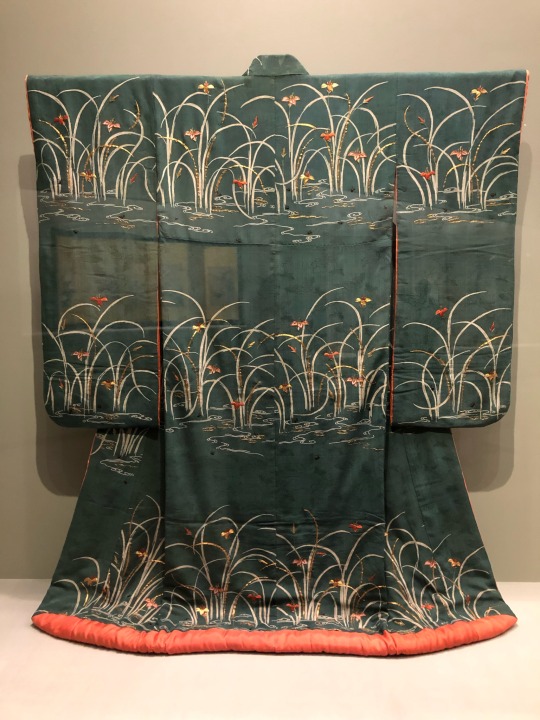
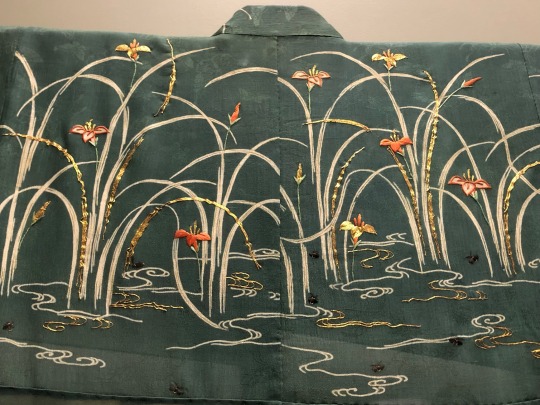
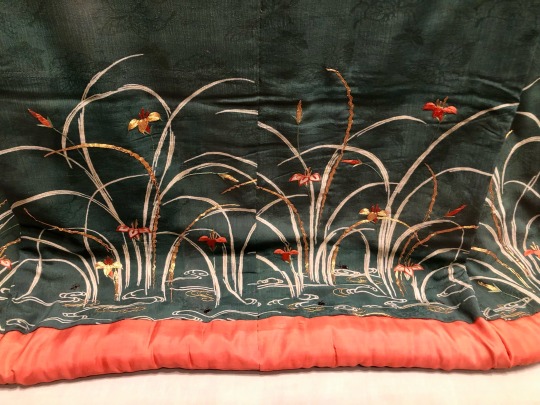

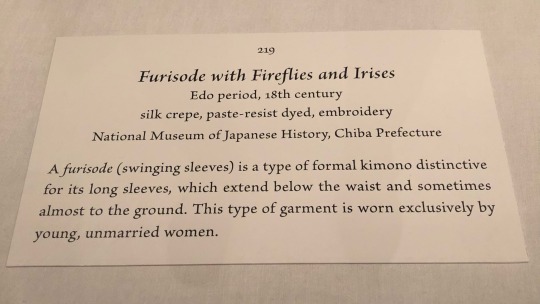
Furisode with Fireflies and Irises
Japan, Edo period, 18th century
silk crepe, paste-resist dyed, embroidery
National Museum of Japanese History (photographed on display at The Life of Animals in Japanese Art exhbition at the National Gallery of Art DC in 2019)
#Japanese art#East Asian art#Asian art#18th century art#kimono#furisode#historical costume#garment#embroidery#irises#fireflies#National Gallery of Art DC#The Life of Animals in Japanese Art#museum visit#exhibition#textiles#National Museum of Japanese History
772 notes
·
View notes
Note
How did cotton win over linen anyway?
In short, colonialism, slavery and the industrial revolution. In length:
Cotton doesn't grow in Europe so before the Modern Era, cotton was rare and used in small quantities for specific purposes (lining doublets for example). The thing with cotton is, that's it can be printed with dye very easily. The colors are bright and they don't fade easily. With wool and silk fabrics, which were the more traditional fabrics for outer wear in Europe (silk for upper classes of course), patterns usually needed to be embroidered or woven to the cloth to last, which was very expensive. Wool is extremely hard to print to anything detailed that would stay even with modern technology. Silk can be printed easily today with screen printing, but before late 18th century the technique wasn't known in western world (it was invented in China a millenium ago) and the available methods didn't yeld good results.
So when in the late 17th century European trading companies were establishing trading posts in India, a huge producer of cotton fabrics, suddenly cotton was much more available in Europe. Indian calico cotton, which was sturdy and cheap and was painted or printed with colorful and intricate floral patters, chintz, especially caught on and became very fashionable. The popular Orientalism of the time also contributed to it becoming fasionable, chintz was seen as "exotic" and therefore appealing.
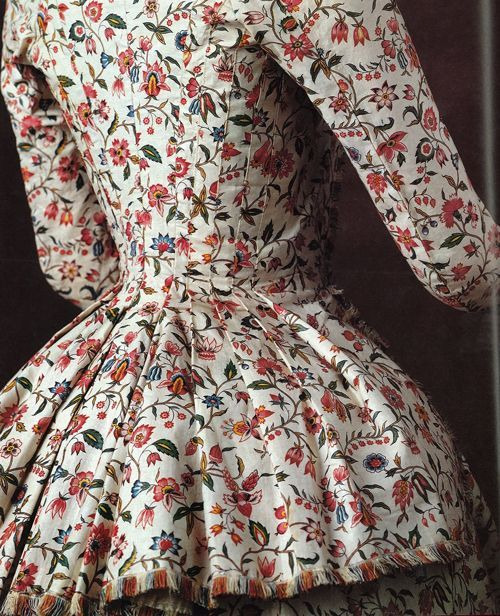
Here's a typical calico jacket from late 18th century. The ones in European markets often had white background, but red background was also fairly common.
The problem with this was that this was not great for the business of the European fabric producers, especially silk producers in France and wool producers in England, who before were dominating the European textile market and didn't like that they now had competition. So European countries imposed trade restrictions for Indian cotton, England banning cotton almost fully in 1721. Since the introduction of Indian cottons, there had been attempts to recreate it in Europe with little success. They didn't have nearly advanced enough fabric printing and cotton weaving techniques to match the level of Indian calico. Cotton trade with India didn't end though. The European trading companies would export Indian cottons to West African market to fund the trans-Atlantic slave trade that was growing quickly. European cottons were also imported to Africa. At first they didn't have great demand as they were so lacking compared to Indian cotton, but by the mid 1700s quality of English cotton had improved enough to be competitive.
Inventions in industrial textile machinery, specifically spinning jenny in 1780s and water frame in 1770s, would finally give England the advantages they needed to conquer the cotton market. These inventions allowed producing very cheap but good quality cotton and fabric printing, which would finally produce decent imitations of Indian calico in large quantities. Around the same time in mid 1700s, The East Indian Company had taken over Bengal and soon following most of the Indian sub-continent, effectively putting it under British colonial rule (but with a corporate rule dystopian twist). So when industrialized English cotton took over the market, The East India Company would suppress Indian textile industry to utilize Indian raw cotton production for English textile industry and then import cotton textiles back to India. In 1750s India's exports were mainly fine cotton and silk, but during the next century Indian export would become mostly raw materials. They effectively de-industrialized India to industrialize England further.
India, most notably Bengal area, had been an international textile hub for millennia, producing the finest cottons and silks with extremely advance techniques. Loosing cotton textile industry devastated Indian local economies and eradicated many traditional textile craft skills. Perhaps the most glaring example is that of Dhaka muslin. Named after the city in Bengal it was produced in, it was extremely fine and thin cotton requiring very complicated and time consuming spinning process, painstakingly meticulous hand-weaving process and a very specific breed of cotton. It was basically transparent as seen depicted in this Mughal painting from early 17th century.
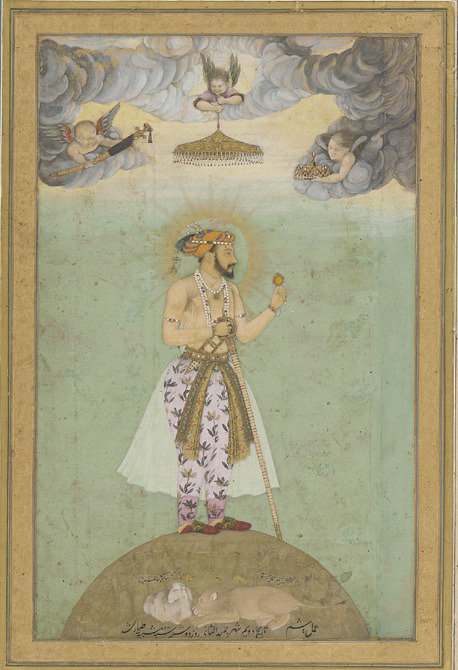
It was used by e.g. the ancient Greeks, Mughal emperors and, while the methods and it's production was systematically being destroyed by the British to squash competition, it became super fashionable in Europe. It was extremely expensive, even more so than silk, which is probably why it became so popular among the rich. In 1780s Marie Antoinette famously and scandalously wore chemise a la reine made from multiple layers of Dhaka muslin. In 1790s, when the empire silhouette took over, it became even more popular, continuing to the very early 1800s, till Dhaka muslin production fully collapsed and the knowledge and skill to produce it were lost. But earlier this year, after years lasting research to revive the Dhaka muslin funded by Bangladeshi government, they actually recreated it after finding the right right cotton plant and gathering spinners and weavers skilled in traditional craft to train with it. (It's super cool and I'm making a whole post about it (it has been in the making for months now) so I won't extend this post more.)


Marie Antoinette in the famous painting with wearing Dhaka muslin in 1783, and empress Joséphine Bonaparte in 1801 also wearing Dhaka muslin.
While the trans-Atlantic slave trade was partly funded by the cotton trade and industrial English cotton, the slave trade would also be used to bolster the emerging English cotton industry by forcing African slaves to work in the cotton plantations of Southern US. This produced even more (and cheaper (again slave labor)) raw material, which allowed the quick upward scaling of the cotton factories in Britain. Cotton was what really kicked off the industrial revolution, and it started in England, because they colonized their biggest competitor India and therefore were able to take hold of the whole cotton market and fund rapid industrialization.
Eventually the availability of cotton, increase in ready-made clothing and the luxurious reputation of cotton lead to cotton underwear replacing linen underwear (and eventually sheets) (the far superior option for the reasons I talked about here) in early Victorian Era. Before Victorian era underwear was very practical, just simple rectangles and triangles sewn together. It was just meant to protect the outer clothing and the skin, and it wasn't seen anyway, so why put the relatively scarce resources into making it pretty? Well, by the mid 1800s England was basically fully industrialized and resource were not scarce anymore. Middle class was increasing during the Victorian Era and, after the hard won battles of the workers movement, the conditions of workers was improving a bit. That combined with decrease in prices of clothing, most people were able to partake in fashion. This of course led to the upper classes finding new ways to separate themselves from lower classes. One of these things was getting fancy underwear. Fine cotton kept the fancy reputation it had gained first as an exotic new commodity in late 17th century and then in Regency Era as the extremely expensive fabric of queens and empresses. Cotton also is softer than linen, and therefore was seen as more luxurious against skin. So cotton shifts became the fancier shifts. At the same time cotton drawers were becoming common additional underwear for women.
It wouldn't stay as an upper class thing, because as said cotton was cheap and available. Ready-made clothing also helped spread the fancier cotton underwear, as then you could buy fairly cheaply pretty underwear and you didn't even have to put extra effort into it's decoration. At the same time cotton industry was massive and powerful and very much eager to promote cotton underwear as it would make a very steady and long lasting demand for cotton.
In conclusion, cotton has a dark and bloody history and it didn't become the standard underwear fabric for very good reasons.
Here's couple of excellent sources regarding the history of cotton industry:
The European Response to Indian Cottons, Prasannan Parthasarathi
INDIAN COTTON MILLS AND THE BRITISH ECONOMIC POLICY, 1854-1894, Rajib Lochan Sahoo
#i have fixed the wording in the beginning so it doesn't sound like i'm saying cotton in general dyed better than wool or silk#answers#fashion history#historical fashion#history#textile history#dress history#historical clothing#indian history#colonial history#indian textiles#cotton#slavery
2K notes
·
View notes
Text

These textiles were found in Peru (Cueva del Guitarrero) and are 12,000 years old.
Edward A. Jolie, Thomas F. Lynch, Phil R. Geib, J. M. Adovasio. Cordage, Textiles, and the Late Pleistocene Peopling of the Andes. Current Anthropology, 2011; 52 (2)
1 note
·
View note
Text

Hellenic traditional clothing of Thrace.
As far as I know this "foresia" is not from a specific Thracian village, but rather a generic representation of the motif the various Thracian villages followed.
Note the bead choker that some Thracian villages produced.
#Hellas#Hellenismos#Thrace#Thracian#traditional clothing#historical clothing#historical fashion#history#textiles
256 notes
·
View notes
Text
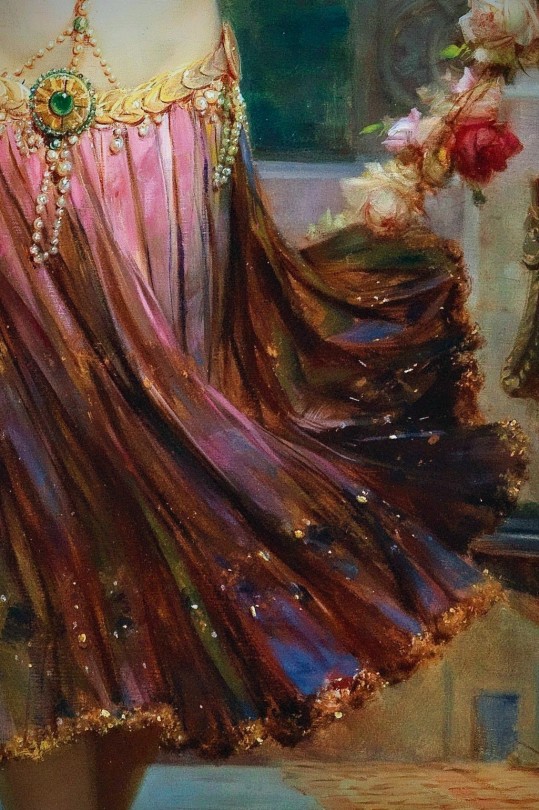

Hans Zatzka
Austrian, 1859-1945
The Belly Dancer (details)
#art#art detail#painting#classical art#hans zatzka#painting detail#art history#historical art#austrian art#art academia#women in art#fashion history#historical fashion#fabrics#textiles#20th century art#academic art#artwork#oil painting#orientalism#zatzka#orientalist art#academism#dark academia#dark academia art#dark academia aesthetic
6K notes
·
View notes